PREVIOUS
National Symbols of India – Part 2
December 17 , 2023
760 days
163641
0
(இதன் தமிழ் வடிவத்திற்கு இங்கே சொடுக்கவும்)
National Symbols of India
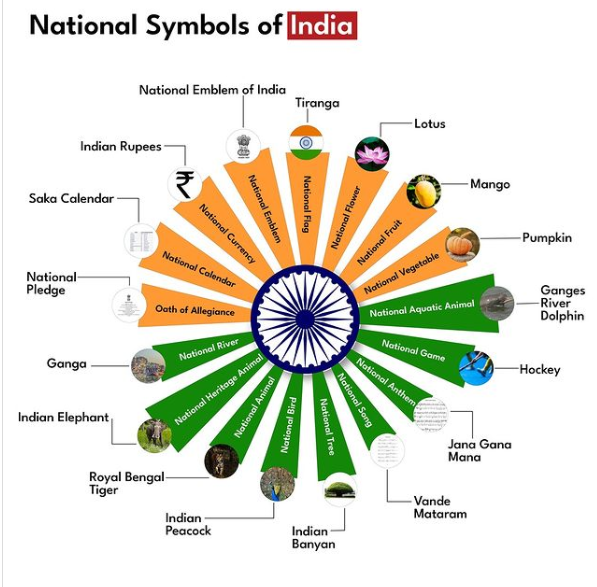
National Animal: The Bengal Tiger
- It is estimated that the Royal Bengal Tiger, India’s national animal, is among the world’s largest cats.
- Tiger is found in various parts of Asia, including India, Bangladesh, Nepal, Myanmar, and Sri Lanka.
- It is a rich-colored well-striped animal with a short coat.
- The combination of grace, strength, power has earned the tiger great respect and high esteem.
- Out of eight races of the species known, the Indian race is the Royal Bengal Tiger.
- The scientific name of the Royal Bengal Tiger is Panthera Tigris.
- The diminishing population of tigers led to the adoption of the tiger as India’s national animal in April 1973.
- Before the tiger, the Lion was India’s national animal in 1950.

National Bird: Peacock
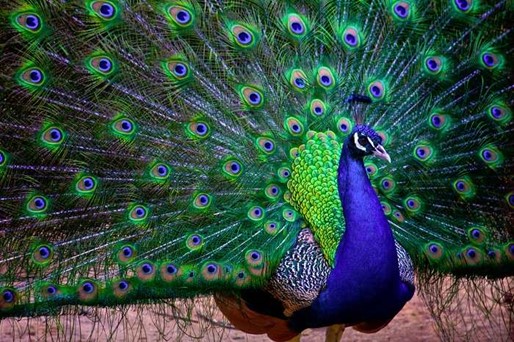
- The male of the species is more colorful than the female, with a glistening blue breast and neck and a spectacular bronze-green trail of around 200 elongated feathers.
- The female is brownish, slightly smaller than the male and lacks the trail.
- The elaborate courtship dance of the male, fanning out the tail and preening its feathers is a gorgeous sight.
- Peacocks are India’s national bird, and the Indian variety.
- Pavo cristatus is its most well-known representative.
- The peacock, a bird native to the subcontinent, symbolizes the unification of vibrant colours in Indian culture.
- It is a colourful, swan-sized bird with a fan-shaped crest.
- On February 1, 1963, the Peacock became the national bird of India.
- India’s lowland parts are home to this species, brewing there year-round.
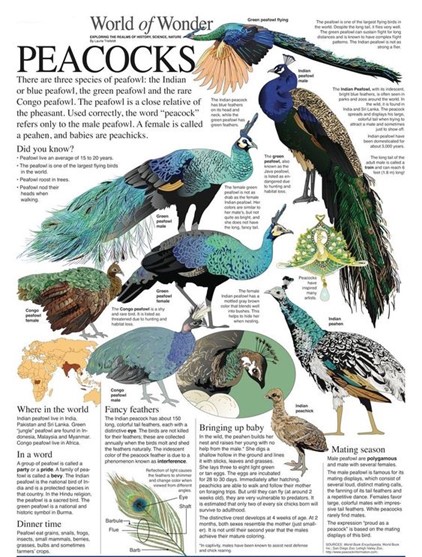
National Aquatic Animal: Dolphin
- In India, the Ganges River dolphin has been designated as the country’s National Aquatic Animal in 2010.
- Guwahati in Assam had become the first city in the country to have the Gangetic River Dolphin as its city animal.
- Also, Guwahati is home to a city-dwelling python.
- River dolphins are found in the Ganges, Yamuna, Chambal, and Brahmaputra rivers and their tributaries in South Asia.
- Gangetic Dolphin is said to represent the purity of the holy Ganga as it can only survive in pure and fresh water.
- It is listed by the IUCN as endangered on their Red List of Threatened Species.

National Fruit: Mango
- The national fruit of India is mango.
- It is affectionately referred to as “King of Fruits” (Mangifera indica).
- Many worldwide have fallen in love with its sweet aroma and delicious flavors since time immemorial.
- Prosperity and abundance are associated with the fruit because of its status as a national symbol.
- Mango is one of the most widely grown fruits of the tropical countries.
- In India, mango is cultivated almost in all parts, with the exception of hilly areas.
- Mangoes have been cultivated in India from time immemorial.
- The poet Kalidasa sang of its praises.
- Alexander savored its taste, as did the Chinese pilgrim Hieun Tsang.
- Akbar planted 100,000 mango trees in Darbhanga, known as Lakhi Bagh.
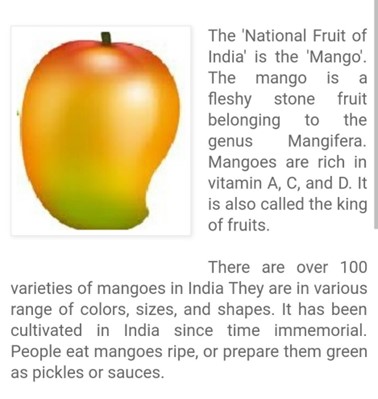
National Flower: Lotus
- Lotus or waterlily is an aquatic plant of Nymphaea with broad floating leaves and bright fragrant flowers that grow only in shallow waters.
- The aquatic herb known as ‘Padma’ in Sanskrit is revered in Indian culture as a magical talisman.
- It is a sacred flower that occupies a unique position in the art and mythology of ancient India.
- Spirituality, abundance, wisdom and purity of heart and mind are all associated with the lotus flower.
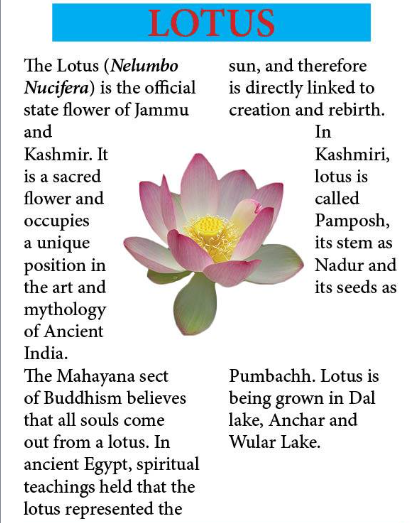
National Tree: Banyan
- Known as Ficus benghalensis, the Banyan tree is the official tree of India.
- Being linked to extended life and having numerous therapeutic benefits.
- This tree is frequently depicted as the fabled “Kalpa Vriksha” or the “Tree of Wish Fulfillment”.
- The branches of the Banyan Tree are rooted like new trees over a big region.
- Large numbers of animals can be found in the banyan tree because of its size and long-life cycle.

National River: Ganga
- They are known as the Ganges or the Ganga, India’s national river.
- It is known locally as the Bhagirathi River.
- It starts in the Himalayas on the Gangotri Glacier’s snow-covered snowfields.
- Hindus consider the Ganges River to be the most holy river on the Earth.
- There are 2,510 kilometers of mountain, plain, and valleys in the Ganga River basin.
- It is making the longest river in India.
- It flows through the main Indian cities of Varanasi, Allahabad, and Haridwar.

National Reptile: King Cobra
- An Ophiophagus hannah is the Indian King Cobra or Snake Eater.
- It serves as the country’s official reptile.
- It can be found in Indian and Southeast Asian forests.
- It is the world’s longest venomous snake.
- It can grow to a maximum length of 19 feet and live for as long as 25 years.
- They can inject up to 6 ccs of venom into each bite.
- In Hinduism, the king cobra is also known as a Naga, and they are revered and adored as gods.
- Shiva is generally represented as the god of death with a cobra wrapped around his neck.

National Heritage Animal: Indian Elephant
- The Indian elephant is the national heritage animal of India since 22 October 2010.
- The Indian elephant (Elephas maximus indicus) has been declared as the national heritage animal by the government in order to conserve its dwindling population.
- 60% of the Asian elephants live in India.
- There are over 25,000 elephants in the country, including 3,500 in captivity in zoos and temples –
- They are particularly in southern and north-eastern parts of the country.
- Indian Elephant has been listed as endangered by IUCN as the population has declined by at least 50% over the last three generations.
- It has been declared an endangered species because of habitat loss, fragmentation, and degradation.
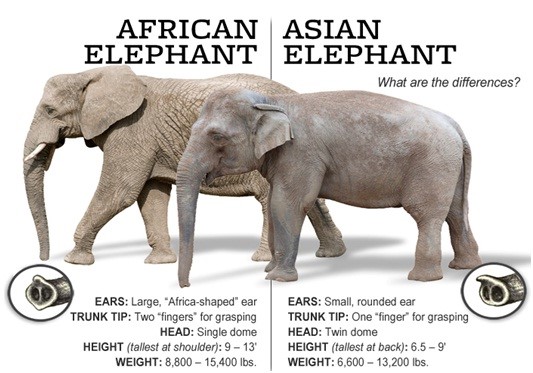
Oath of Allegiance: National Pledge
- Indians are required to take the National Pledge, in which they swear allegiance to the country.
- People in India often recite it in unison, notably at school functions and on national holidays like Independence Day and Republic Day.
- In 1962, Pydimarri Venkata Subba Rao, a Telugu writer, penned the promise.
- Consequently, it has been translated into several different languages, beginning with Visakhapatnam in 1963.
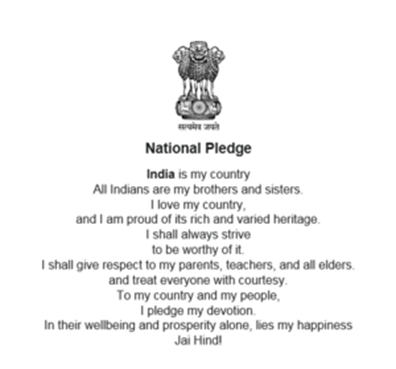
National Game
- The Ministry of Youth Affairs and Sports of India clarified that, officially, the country does not have a national game; no game, including hockey, has been notified as such.
National Vegetable Pumpkin
- The national vegetable of India is the pumpkin.
- Pumpkin is a winter squash that is round with smooth and ribbed skin which is yellow.
- It grows throughout India and doesn’t have many soil requirements to grow.
- Pumpkin can be grown easily as a climber or creeper.

National Microbe
- Lactobacillus is declared the National Microbe for India in October 2013.
- It is used for the production of yogurt.

Leave a Reply
Your Comment is awaiting moderation.


